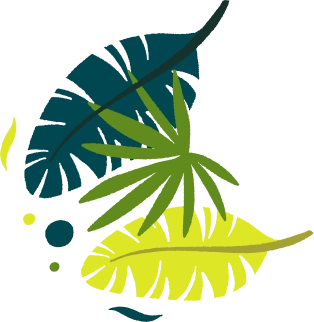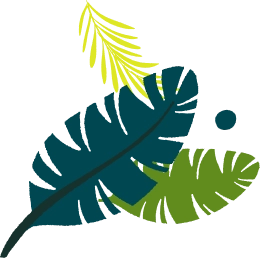


Central Vietnamese Phong Nha is a real beauty, full of amazing caves and jungles. Due to its setting in Phong Nha-Ke Bang National Park, it contains one of the largest cave systems in the world and, therefore, is a real dream for every spelunker or adventure-seeker. In this blog, we will talk about some of the most famous and amazing caves and two lesser-known but really beautiful ones from Jungle Boss Tours in great detail.
This national park was declared a UNESCO World Heritage site and represents something like a real wonderland due to the more-than-300 caves and grottoes it possesses. Most of these were created many millions of years ago and contain some of the most enormous and magnificent caverns in the world. It is also known for its very high biodiversity, with innumerable species of flora and fauna found in the tropical jungles of the region.
These caves are mainly a result of millions of years of erosion of limestones in Phong Nha. The karst land was carved out into complex passages, big chambers, and even underground rivers. Combining water, time, and rock resulted in an underground fairyland world, full of stalactites and stalagmites, among many other forms of incredible rock.
One of the most famous caves in the area, it lends its name to the national park. In English, Phong Nha Cave translates to the "Cave of Teeth and Wind," and measures in at over 7 kilometers in length, though just a fraction of it is open to tourists.
It is a 1,500-meter-long cave: the river running underground throughout allows for boat rides inside its setting, showing off big rock formations with crystal-clear pools. Once it gave shelter during wartime to the locals and has always been a place of mystery and investigation.
It was discovered in 2005 and has now emerged as one of the most favorite tourist destinations of Phong Nha. This is believed to be the longest dry cave in Asia, being 31,000 meters long. Indeed, the interior is a vast dreamland of huge stalagmites and stalactites that glimmer under the light. It is crossed on a raised board of walks of wood, which, compared with ease, can be passed by visitors the first kilometer, while the deeper parts are for more adventurous excursions.
Because of its cathedral-like formation and big chambers, so many have referred to this as the most beautiful cave in the world.
The Dark Cave is a combination of adventure and ecological discoveries. To reach its entrance, visitors must cross the river via zip line, kayak, and swimming. Once inside the cave, a natural mud bath could be indulged in, considered to be among the tourists' favorite. Dark Cave likewise plays importance in ecological concerns with the variety of flora and fauna within its surrounding jungle areas.
It allows visitors to see the thrill of the cave and the glimpse of natural beauty outside of the environment that surrounds it.
Son Doong Cave is surely the most valuable stone in Phong Nha's collection of caves: the largest cave in the world by volume and, frankly, so big that its caverns could accommodate skyscrapers. Discovered as recently as 2009, expeditions into its depths unveiled a whole new world of an underground ecosystem, complete with its own jungle, river, and peculiar weather systems.
It is truly a monumental cave, and for this reason, plus due to its natural beauties, only a few permits are issued every year, and that makes any trek into Son Doong extremely exclusive and sought after in the world of caves.
The third most massive cave in the world, Hang En, is the gateway to Son Doong. This cave has enormous caverns with an underground river and beach-all one can imagine. Camping out surreal for people on the trek to Son Doong, it has rather surprisingly included lots of bat species and swifts in its biodiversity, while the interior consists of sandy beaches and high rocky formations.
People usually sleep inside the cave, so seldom does one have the opportunity of sleeping under such a great vaulted ceiling.
Another one of the many hidden treasures of Phong Nha is the Tu Lan Cave system, which has its fair share of jungle trekking, underground rivers, and even waterfalls. Being less touristy because it's more remote, this can also provide an ultimate off-the-beaten-path adventure for those seeking it. Tourists have made multi-day treks deep into the jungle, wading across rivers and climbing over rocks to make their way into perfect, virgin caves.
Elephant's Cave: Less famous and somewhat more adventurous, this lies deep in the Ma Da Valley with dense jungle and dramatic limestone cliffs flanking it. Actually, inside the cave are some beautiful formations of rocks shaped like elephant trunks, hence the name. Go on a guided trek into Elephant's Cave with Jungles Boss Tours and combine caving with a more challenging hike along rugged terrain for an unforgettable adventure.
Other great options that Jungle Boss Tours offer include the worldly, fourth-biggest cave: Hang Pygmy Cave. With its enormous size and humongous, vertical chambers, the Hang Pygmy Cave can surely take away the breath of any oncoming tourist. Multi-day treks that take adventurers camping inside its vast chambers enable them to make in their minds a sense of wonder at the scale of this natural marvel.
Jungle Boss operates a variety of tours for small groups deep inside the cave world, including Elephant Cave, Hang Pygmy, among others. It is a place where nature should be connected with, safely and responsibly. Experts have recognized Jungle Boss for using expert guides, adopting sustainable practice methods, and keeping tabs on every visitor with safety in mind while having lifetime experiences.
These are high-demand tours to see less-well-known caves in Phong Nha, mixing some of the most thrilling adventures with cultural immersion.
Visiting the caves of Phong Nha can indeed be very dangerous; it takes special attention from everyone. Guided tours are definitely possible, and the group can move forward in front with a certified professional, provided with all equipment such as helmets, life jackets, and harnesses. Pay close attention to what your guide will say, be hydrated, and be prepared for extreme physical exhaustion, since most treks and climbs are pretty demanding.
The ideal period of time to visit Phong Nha caves is between February and August. This is the best period because trekking and caving are perfect, without delays due to weather conditions; it is generally warm yet not too hot, with clear skies. During the wet season, between September and January, touring the caves might be restricted as it experiences regular flooding and slippery trails.
Besides being an adventurous destination, Phong Nha-Ke Bang National Park is not less important in terms of its role for conservation. Fragile ecosystems inside the caves and in the jungle are really laboriously guarded by local and international organizations. Tour companies, like Jungle Boss, put great emphasis on elaborating how to conduct sustainable tours, which will not hit the environment hard and raise ecological awareness among people. Leave-no-trace rules are also suggested to visitors so that future generations could be amazed with the beauty holding these caves.
Get the latest information about our tours and special offers!